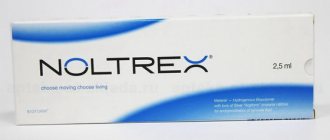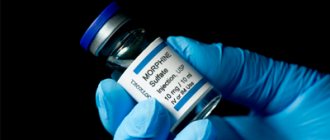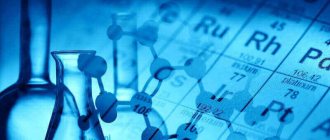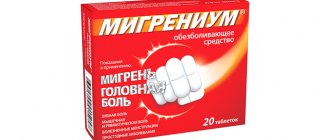Write a review
Reviews: 0
Manufacturers: Axellia Pharmaceuticals Aps (Denmark)
Active ingredients
- Polymyxin B
Disease class
- Bacterial meningitis, not elsewhere classified
- Conjunctivitis, unspecified
- Keratitis
- Purulent and unspecified otitis media
- Pneumonia without specifying the pathogen
- Chronic sinusitis
- Phlegmon
- Decubital ulcer
- Osteomyelitis
- Diarrhea and gastroenteritis of suspected infectious origin
- Septicemia, unspecified
- Other and unspecified infectious diseases
- Cystitis
- Urethritis and urethral syndrome
Clinical and pharmacological group
- Not indicated. See instructions
Pharmacological action
- Antibacterial
- Bactericidal
Pharmacological group
- Other antibiotics
Substance-powder of Polymyxin B sulfate (Polymyxini B sulfas)
Instructions for medical use of the drug
Description of pharmacological action
Acts primarily on gram-negative microorganisms. Absorbed on phospholipids of the membrane, increases its permeability, causes lysis of bacteria. Resilience develops slowly; causes cross-resistance with colistin. Active against Salmonella, Shigella, E.coli, Klebsiella spp., Bordetella pertussis, Haemophilus influenzae, Enterobacter, Pseudomonas aeruginosa, Vibrio cholerae (except eltor type).
Indications for use
Acute infections caused by sensitive microorganisms (Pseudomonas aeruginosa, salmonella, shigella, etc.): - internally - infectious and inflammatory diseases of the gastrointestinal tract, - injection - sepsis, bacteremia, meningitis, pneumonia, - externally (or in the cavity) - urinary tract diseases ( cystitis, urethritis), ENT organs (otitis, sinusitis, sinusitis), skin (including infected burns, abscess, phlegmon, bedsores), bones (osteomyelitis), eyes (conjunctivitis, keratitis).
Release form
Powder substance; aluminum can 0.13 kg; Powder substance; aluminum can 0.63 kg; Powder substance; aluminum can 1.25 kg;
Pharmacodynamics
Acts primarily on gram-negative microorganisms. Absorbed on phospholipids of the membrane, increases its permeability, causes lysis of bacteria. Resilience develops slowly; causes cross-resistance with colistin. Active against Salmonella, Shigella, E.coli, Klebsiella spp., Bordetella pertussis, Haemophilus influenzae, Enterobacter, Pseudomonas aeruginosa, Vibrio cholerae (except eltor type).
Use during pregnancy
Pregnant women are prescribed for health reasons, taking into account the expected benefit to the mother and the potential risk to the fetus.
Contraindications for use
Hypersensitivity, renal dysfunction, myasthenia gravis, for external use - perforation of the eardrum, extensive skin lesions.
Side effects
Damage to the kidneys (albuminuria, cylindruria, azotemia, proteinemia, tubular necrosis, electrolyte metabolism disorders) and nervous system (dizziness, ataxia, disturbances of consciousness, vision, drowsiness, peripheral paresthesia, in predisposed patients - neuromuscular blockade, respiratory paralysis, apnea; with intrathecal introduction - meningeal symptoms), superinfection, candidiasis, allergic reactions (skin rash, itching, urticaria, eosinophilia); when taken orally - nausea, pain in the epigastric region, loss of appetite; when administered IM - pain at the injection site, IV - thrombophlebitis.
Directions for use and doses
IM, IV. Adults: IM - 0.5-0.7 mg/kg 3-4 times/day (maximum daily dose - no more than 200 mg), IV - daily dose 2 mg/kg in 2 doses with an interval of 12 hours (no more than 150 mg). Children: IM, IV, regardless of age - 0.3–0.6 mg/kg 3–4 times/day. If renal function is impaired, the dose is reduced and the intervals between doses are increased in accordance with creatinine Cl. Inside (in the form of an aqueous solution). Adults are prescribed 100 mg every 6 hours, children - 4 mg/kg 3 times a day. Course duration is 5–7 days. Externally. Every hour, 1–3 drops of a 0.1–0.25% solution in each eye (if there is a positive reaction, the intervals between injections are increased). Intrathecal. Adults and children over 2 years old - 50,000 units once a day for 3-4 days, then every other day for another 2 weeks after receiving positive results; children under 2 years old - 20,000 units/day for 3-4 days or 25,000 units once every 2 days.
Overdose
Not described.
Interactions with other drugs
Shows synergism with chloramphenicol, tetracycline, sulfonamides and trimethoprim against Pseudomonas aeruginosa, Proteus, Serratia, with ampicillin - in terms of its effect on gram-negative rods, carbenicillin - Pseudomonas aeruginosa. Combine with bacitracin and nystatin. Enhances the oto- and nephrotoxicity of aminoglycosides (kanamycin, streptomycin, tobromin, neomycin, gentamicin) and the muscle relaxation caused by them, as well as by blockers of neuromuscular transmission. Reduces the concentration of heparin in the blood (forms complexes). In solutions, it is incompatible with ampicillin sodium salt, chloramphenicol, cephalosporin antibiotics, tetracycline, isotonic sodium chloride solution, amino acid solutions, heparin.
Precautions for use
Parenterally used only in a hospital setting. In case of renal failure and diseases accompanied by impaired neuromuscular transmission, correction of the dosage regimen and monitoring of renal function is necessary.
LINCOSAMIDES
MODERN ANTIMICROBIAL CHEMOTHERAPY
MODERN ANTIMICROBIAL CHEMOTHERAPY
L.S. Strachunsky, S.N. Kozlov. Guide for doctors
| Content | ANTIBIOTIC.ru |
Antibacterial drugs
This group includes lincomycin and clindamycin.
General properties
- Bacteriostatic effect.
- Narrow spectrum of activity: gram-positive cocci and non-spore-forming anaerobes.
- Cross-resistance of microflora to both drugs.
- High concentrations in bones and joints.
- Poor penetration through the BBB.
- No cross-allergy with β-lactams.
- Relatively common development of antibiotic-associated ( C.difficile
-associated) diarrhea.
Activity spectrum
| Gram(+) cocci: | staphylococci, including PRSA; streptococci, including pneumococci, but many penicillin-resistant pneumococci are resistant. MRSA and enterococci are resistant. |
| Anaerobes: | peptostreptococci, fusobacteria, B.fragilis etc. |
Adverse reactions
Small:
- dyspeptic symptoms;
- allergic reactions (very rare).
Large:
- C. difficile
-associated diarrhea (pseudomembranous colitis) develops as a result of suppression of non-spore-forming anaerobic intestinal flora and the proliferation
of C. difficile
, which produces enterotoxins. Ulcers can form in the large intestine, up to perforation of the intestine and the development of peritonitis. If the patient develops loose stool mixed with blood, immediate discontinuation of the drug is necessary and sigmoidoscopy is performed.
Help measures:
- metronidazole orally (if ineffective - vancomycin), biological products, detoxification therapy. Loperamide(!) should not be used.
LINCOMYCIN
Linkocin, Neloren
Natural lincosamide, most common in Russia.
Spectrum of activity, adverse reactions - see above.
Pharmacokinetics
It is poorly absorbed from the gastrointestinal tract: by 30% when taken on an empty stomach, and only by 5% when taken after meals. Metabolized in the liver, excreted primarily through the gastrointestinal tract. T1/2 - 4-6 hours.
Indications
Lincomycin is an alternative drug for infections caused by staphylococci, streptococci and anaerobes:
- streptococcal (GABHS) tonsillopharyngitis (with an allergy to penicillins);
- NPD infections (community-acquired pneumonia, lung abscess, empyema);
- intra-abdominal and pelvic infections;
- infections of the skin, soft tissues;
- osteomyelitis.
For severe infections with suspected mixed flora (peritonitis, salpingoophoritis, etc.), it is necessary to combine it with aminoglycosides or fluoroquinolones that act on gram-negative bacteria.
Dosage
Adults
Orally - 0.5 g every 8 hours 1 hour before meals; parenterally 0.6-1.2 g every 12 hours.
Children
Orally - 30-60 mg/kg/day in 3-4 doses; parenterally - 10-20 mg/kg/day in 2 administrations.
Release forms
Capsules of 0.25 g and 0.5 g; ampoules of 1 ml of 30% solution (0.3 g/ml); bottles of 0.5 g of powder for the preparation of solution for injection.
CLINDAMYCIN
Dalatsin S, Klimitsin
It is a semi-synthetic derivative of lincomycin. In most countries of the world, it has practically replaced lincomycin. It is used for wider indications.
Differences from lincomycin:
- significantly higher antimicrobial activity, but does not affect lincomycin-resistant strains;
- in high doses it affects some protozoa ( P.falciparum
, toxoplasma); - very high bioavailability (90%), independent of food;
- shorter T1/2 (2.5-3 hours).
Indications
- Staphylococcal, streptococcal and anaerobic infections (alternative drug):
- streptococcal tonsillopharyngitis (with an allergy to penicillins);
- NPD infections (community-acquired pneumonia, lung abscess, empyema);
- intra-abdominal and pelvic infections;
- infections of the skin, soft tissues, bones, joints;
- sepsis.
For severe infections with suspected mixed flora, it must be combined with aminoglycosides or fluoroquinolones.
Dosage
Adults
Orally - 0.3-0.45 g every 6 hours; parenterally 0.3-0.9 g every 6-8 hours. For bacterial vaginosis - intravaginally (in the form of a cream) for 10 days.
Children
Orally - 10-25 mg/kg/day in 3-4 doses; parenterally - newborns: 15-25 mg/kg/day in 3 injections, over 1 month: 20-40 mg/kg/day in 3 injections.
Release forms
Capsules of 0.075 g, 0.15 g and 0.3 g; granules for making syrup; ampoules with a solution containing 0.15 g/ml; vaginal cream, 2%; gel, 1%.
From this group of bactericidal antibiotics, which have a narrow spectrum of activity against gram-negative flora, polymyxin B
and
polymyxin M
, abroad - colistin (a derivative of natural polymyxin E).
The main clinical significance is the activity of polymyxins against P. aeruginosa
.
Activity spectrum
| Gram(-) sticks: | P. aeruginosa , with virtually no resistance; bacteria of the intestinal group ( E. coli , salmonella, shigella, klebsiella, etc.). |
All Proteus
(distinctive feature), serrations, streptococci, staphylococci, enterococci, anaerobes.
Pharmacokinetics
They are not absorbed into the gastrointestinal tract even when applied topically. When administered parenterally, they penetrate poorly through tissue barriers, do not pass through the BBB, and create low concentrations in pleural and synovial fluids. They quickly inactivate into pus. Metabolized in the liver and excreted by the kidneys.
Adverse reactions
- Severe nephrotoxicity (glomerular filtration rate must be monitored every 3 days).
- Neurotoxicity - manifested by damage to the central and peripheral nervous system.
- Neuromuscular blockade, and of all antibiotics, polymyxin B has the greatest ability to cause it.
- Hematotoxicity - most often thrombocytopenia.
- Hypocalcemia, hypokalemia.
Risk factors:
initial renal failure, myasthenia gravis, use of muscle relaxants.
Help measures:
calcium chloride intravenously, anticholinesterase drugs.
Drug interactions
Polymyxins cannot be combined with nephrotoxic drugs (aminoglycosides, amphotericin B, etc.), as well as with muscle relaxants.
Indications
- Polymyxin B is a reserve antibiotic and is used for infections caused by multidrug-resistant strains of P. aeruginosa
or other gram-negative bacteria, with the exception of
Proteus
spp. - Polymyxin M is used for local treatment of Pseudomonas aeruginosa infection: infected wounds, burns, otitis externa, corneal ulcers.*
Contraindications
- Kidney failure.
- Myasthenia.
- Botulism.
Polymyxin B dosage
Adults and children
Parenteral - 1.5-2.5 mg/kg/day in 3-4 administrations (no more than 0.2 g/day).
Release forms
Polymyxin B - bottles of 0.025 g and 0.05 g of powder for the preparation of a solution for injection.
Polymyxin M - bottles of 0.5 g of powder for preparing a solution for topical use; ointment, 0.2%.
* Previously, it was widely used internally for intestinal infections, often in combination with furazolidone, but is not included in modern treatment regimens.
This group of antibiotics includes vancomycin and teicoplanin, which have a predominantly bacteriostatic effect and a narrow spectrum of activity. The previously used drug ristomycin is currently not used due to its high toxicity.
The main clinical significance of glycopeptides lies in their activity against MRSA and enterococci. Abroad (USA, France) vancomycin-resistant E.faecium
(VRE).
In recent years, S.aureus
with reduced sensitivity to glycopeptides (VISA, GISA) has appeared in a number of countries around the world.
VANCOMYCIN
Vancocin, Editsin
Drug of choice for the treatment of staphylococcal infections caused by MRSA and S. epidermidis
, as well as enterococci (
E.faecalis
,
E.faecium
), resistant to ampicillin and aminoglycosides.
Activity spectrum
| Gram(+) cocci: | staphylococci, including PRSA, MRSA and S.epidermidis ; streptococci, including pneumococci resistant to penicillin and other antibiotics; enterococci ( E.faecalis , E.faecium ). |
| Anaerobes: | clostridia, including C. difficile . |
Pharmacokinetics
Practically not absorbed when taken orally. Intramuscular administration is not recommended due to extreme pain and risk of tissue necrosis. The main route of administration is intravenous. It is well distributed in the body, penetrating many organs and tissues. It can pass through the BBB only when the membranes of the brain are inflamed. It is not metabolized in the body and is excreted unchanged through the kidneys. T1/2 - 6-8 hours with normal renal function.
Adverse reactions
- Phlebitis (most common).
- With rapid intravenous administration, histamine is released from mast cells with the development of nausea, hypotension, flushing of the chest and neck (red neck, red man syndrome).
- Ototoxicity: tinnitus, hearing impairment (usually in the elderly and with impaired renal function).
- Nephrotoxicity: decreased glomerular filtration rate, interstitial nephritis (especially when combined with aminoglycosides and in patients with underlying renal impairment).
- Neutropenia.
Indications
- Severe systemic infections caused by MRSA, S.epidermidis
, enterococci, penicillin-resistant pneumococci. - C. difficile
- associated diarrhea, pseudomembranous colitis (inside). - Perioperative antibiotic prophylaxis in hospitals where wound infections are caused by MRSA or S.epidermidis
.
Dosage
Adults
Intravenously (drip only!) - 2 g/day: 1.0 g every 12 hours or 0.5 g every 6 hours per 100-200 ml of 5% glucose or physiological NaCl solution. Each administration should last at least 1 hour (!).
Orally - 0.5 g every 6-8 hours.
Children
Intravenous drip - 40-60 mg/kg/day in 2-4 administrations (no more than 2.0 g/day); orally 40 mg/kg/day in 3-4 divided doses.
Newborns
Intravenous drip - 1st dose - 15 mg/kg, then 10 mg/kg every 12 hours (age up to 7 days) or every 8 hours (age >7 days).
Release forms
Bottles of 0.5 g and 1.0 g of powder for preparing a solution for infusion.
TEICOPLANIN
Thargocid
In many respects it is close to vancomycin.
Differences from vancomycin:
- less active against coagulose-negative staphylococci ( S.epidermidis
,
S.saprophyticus
,
S.haemolyticus,
etc.); - acts on some strains of E. faecium
resistant to vancomycin; - has a significantly longer T1/2 (40-70 hours), which allows it to be used once a day, including in outpatients;
- can be administered intravenously and intramuscularly;
- better tolerated, in particular, does not cause the development of “red neck” syndrome.
Dosage
Adults
Intravenously (drip or stream) - on the 1st day 0.4 g, on the subsequent days 0.2 g per injection; for severe infections - the first three injections of 0.4 g every 12 hours, then 0.4 g every 24 hours. Starting from the second day, it can be administered intramuscularly.
Children
Intravenously - up to 1 month: on the 1st day 16 mg/kg, then 8 mg/kg/day in one injection; over 1 month: the first three injections of 10 mg/kg every 12 hours, then 6-10 mg/kg/day.
Release forms
Bottles of 0.2 g and 0.4 g of powder for the preparation of solution for injection.
LINEZOLID
Zyvox
The first representative of oxazolidinones, a new class of synthetic antibacterial drugs. It has a predominantly bacteriostatic effect and a narrow spectrum of activity.
The main clinical significance of linezolid is its action against gram-positive cocci that are resistant to many other antibiotics, including MRSA, penicillin-resistant pneumococci, and vancomycin-resistant enterococci.
The availability of intravenous and oral dosage forms allows the use of linezolid for step-down therapy.
Activity spectrum
| Gram(+) cocci: | staphylococci - S.aureus (including MRSA), coagulase-negative staphylococci; streptococci, including S.pyogenes and S.pneumoniae (including penicillin-resistant strains); enterococci - E.faecalis, E.faecium (including vancomycin-resistant strains). |
| Anaerobes: | spore-forming - clostridia (except C.difficile ); non-spore-forming - peptostreptococci, prevotella, some strains of B.fragilis . |
Gram-negative flora is resistant.
Pharmacokinetics
Well absorbed from the gastrointestinal tract, bioavailability (about 100%) does not depend on food. Quickly distributed in tissues with good blood supply. Metabolized in the liver. It is excreted in the urine, mainly in an inactive state. T1/2 - 4.5-5.5 hours, and does not change significantly with impaired liver or kidney function.
Adverse reactions
In general, the drug is well tolerated. Some patients may experience:
- dyspeptic and dyspeptic phenomena;
- taste disturbances;
- headache;
- moderate hematotoxicity (reversible anemia, thrombocytopenia);
- transient increase in the activity of transaminases and alkaline phosphatase.
Drug interactions
Linezolid is a weak monoamine oxidase inhibitor, and therefore may enhance the pressor effect of some sympathomimetics (dopamine, pseudoephedrine, etc.).
Indications
- Staphylococcal and pneumococcal infections with resistance to other antibiotics:
- NPD infections - community-acquired and nosocomial pneumonia;
- skin and soft tissue infections;
or
E.faecium
.
Dosage
Adults
Orally (regardless of food) or intravenously - 0.4-0.6 g every 12 hours.
Children over 5 years old
Orally - 20 mg/kg/day in 2 divided doses, regardless of food.
Release forms
Tablets of 0.4 g and 0.6 g; granules for preparing a suspension 100 mg/5 ml; solution for infusion (2 mg/ml) in bottles of 100, 200 and 300 ml.
| Copyright © 2000-2007 ANTIBIOTIC.ru Posted: 05/15/2004 |
The address of this page: https://www.antibiotic.ru/books/mach/mac0112.shtml
Last modified date: 05/24/2004 18:56
Similar drugs:
- Augmentin Oral tablets
- Tea tree DN Ointment for external use
- Augmentin Powder for suspension for oral administration
- Bactrim Oral suspension
- Dioxydin Mouth rinse solution
- Pancef Oral tablets
- Nifuroxazide (Nifuroxazide) Oral tablets
- Cifran OD Oral tablets
- Pancef Granules for the preparation of suspension for oral administration
- Augmentin ES Powder for oral solution
** The Drug Directory is intended for informational purposes only. For more complete information, please refer to the manufacturer's instructions. Do not self-medicate; Before you start using Polymyxin B sulfate, you should consult a doctor. EUROLAB is not responsible for the consequences caused by the use of information posted on the portal. Any information on the site does not replace medical advice and cannot serve as a guarantee of the positive effect of the drug.
Are you interested in the drug Polymyxin B sulfate? Do you want to know more detailed information or do you need a doctor's examination? Or do you need an inspection? You can make an appointment with a doctor - the Euro lab is always at your service! The best doctors will examine you, advise you, provide the necessary assistance and make a diagnosis. You can also call a doctor at home . Euro lab clinic is open for you around the clock.
** Attention! The information presented in this medication guide is intended for medical professionals and should not be used as a basis for self-medication. The description of the drug Polymyxin B sulfate is provided for informational purposes and is not intended for prescribing treatment without the participation of a doctor. Patients need to consult a specialist!
If you are interested in any other drugs and medications, their descriptions and instructions for use, information about the composition and form of release, indications for use and side effects, methods of use, prices and reviews of drugs, or you have any other questions and suggestions - write to us, we will definitely try to help you.



